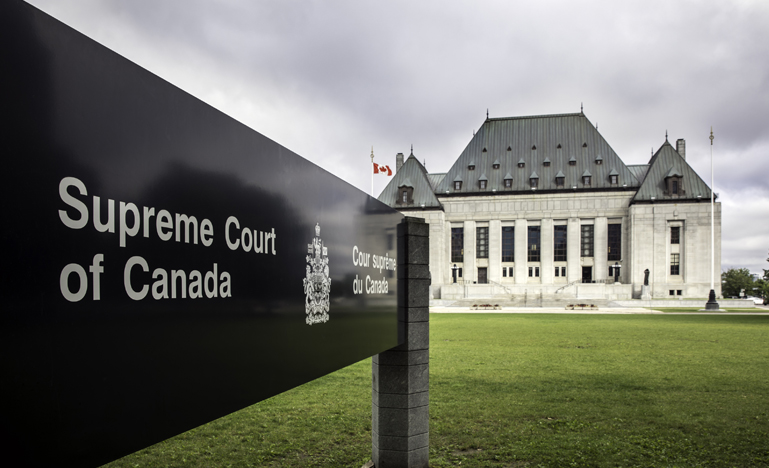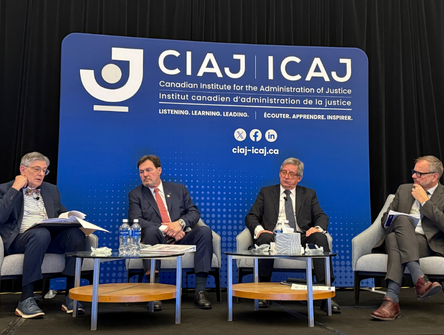Forming reasonable suspicion
The Supreme Court of Canada reaffirms the law of entrapment, with some extra guidance, in two “dial-a-dope” prosecutions.

Police officers, in the course of their duties, have quite a bit of leeway to lie, deceive, and trick suspects into implicating themselves.
Exactly how far investigators are allowed to go was the question before the Supreme Court of Canada in R. v. Ahmad.
The top court was asked to assess two cases involving undercover officers who'd arranged to buy drugs from 'dial-a-dope' operations — where all transactions are organized through cellphones. In both cases, tried together, officers got a tip that a certain cellphone number was being used for trafficking cocaine. In both cases, officers called up the number and arranged to buy a small amount of drugs. After two transactions, the police moved in to arrest the men who arrived to sell the cocaine.
The two cases differed in one key respect. In one, police had solid intelligence that the interlocutor on the other end of the line was selling drugs under the pseudonym "Romeo." In the other, police received a similar tip about the dealer who went by the name of "Jay." But the investigative file was considerably lighter, and didn't expressly connect their suspect to the pseudonymous drug dealer. Romeo also directly invited the police to request drugs ("What do you need?"), whereas Jay did not.
The issue before the Supreme Court was whether it was entrapment to call those two numbers and offer cash for drugs. Was it possible that the police had goaded the two men on the other end of the phone line to commit a crime that they might not otherwise have committed?
The court decided last week, narrowly, to endorse the existing framework on entrapment — one that dates back a time long before cellphones were readily available. In so doing, the court allowed the accused's appeal in the case where police evidence was shaky, but quashed the appeal for where police had a reasonable suspicion that the man on the other end of the phone was, in fact, selling drugs.
"The offer of an opportunity to commit a crime must always be based upon a reasonable suspicion of particular criminal activity," the five-justice majority found. What's more, the suspicion must be "individualized, in the sense that it picks an individual target — whether a person, an intersection or a phone number — out of a group of persons or places."
The majority ruled that the suspects' own language was of considerable importance when it came to the officers' invitation.
"This decision simply provides guidance as to how old principles can and do apply to our modern technological landscape," says Kevin Westell, a Vancouver-based criminal lawyer and a partner at Pender Litigation.
In R. v. Mack, which originally established this framework around entrapment in 1988, the Supreme Court held that it was necessary to establish a reasonable suspicion "because of the risk that the police will attract people otherwise without involvement in a crime and because it is not a proper use of the police power to randomly test the virtue of people."
That framework is now more than 30 years old, but the court has opted to keep it, roughly, as is. As Steven Penney, a law professor at the University of Alberta, tweeted: "The upshot is that the majority reaffirmed the status quo, despite compelling arguments from opposing directions that the status quo was unworkable."
Managing the status quo, before Friday, was made difficult by the proliferation of cellphones and the advent of the internet. Mack provided principles, but figuring out how to square them with the 21st century left some gaps.
"It's not that investigators have failed to abide by the legal framework," says Westell. "It's a matter of the court affirming the application of that framework and providing guidance on its application to the current technological reality."
The majority court offers a few paragraphs about that changing landscape.
"State surveillance over virtual spaces is of an entirely different qualitative order than surveillance over a public space," wrote Justices Andromache Karakatsanis, Russell Brown, and Sheilah Martin for the majority. "Technology and remote communication significantly increase the number of people to whom police investigators can provide opportunities, thereby heightening the risk that innocent people will be targeted.
"Online anonymity allows police to increasingly fabricate identities and 'pose' as others to a degree that would not be possible in a public space like the Granville Mall."
Breana Vandebeek, a Toronto-based partner at Gorham Vandebeek, is trying a case right now that tests exactly how police can run entrapment operations in those digital spaces. To that end, she was watching Ahmad closely.
"It's a good decision, it reaffirms Mack," she told CBA National. "It doesn't just let the police go do whatever they want, if they're doing it in good faith. It offers some prescribed limits."
Her client responded to a Kijiji ad for sexual services, and exchanged messages with the person behind the ad — in fact, an undercover police officer. The officer, initially posing as an 18-year-old woman, pulled a bait-and-switch in the middle of the conversation, telling the man that she was, in fact, just 16 years old. Just the same, the man arranged to meet her at a hotel, where he was promptly arrested.
Vandebeek's case, which is set to be heard at the Ontario Court of Appeal along with other, similar, cases, is already putting to the test the principles outlined in Ahmad. The Crown hopes to convince a judge that the sexual services boards of Kijiji are hotspots of underage sex work andnd human trafficking, such that a reasonable suspicion can be established of anyone responding to those ads. The question they need to answer, Vandebeek notes: "Is that specific enough?" Or, as the court warned against, "is this random virtue testing?"
"The reasonable suspicion can't be looked at retrospectively, and they've reinforced that in Ahmad," Vandebeek adds.
The majority on the Supreme Court emphasized the importance of tightly circumscribing virtual locations where "police can provide the opportunity to commit a crime." That's key because the Court of Appeal will need to determine whether the invitation to commit a crime came about when police had a reasonable suspicion of criminality. Did the entrapment happen when the police posted the ad? Or when they invited the respondent to meet up with a 16-year-old?
"It comes down to a really technical look at the different chats," Vandebeek says, adding that "no Supreme Court case is ever going to give an answer for every single manifestation of facts."
Still, Ahmad offers real guidance to the lower courts.
The lower courts will have their work cut out for them, in parsing the chats and communications in each case. The minority had proposed a considerably more straightforward solution. Justice Michael Moldaver wrote for the minority that their proposed framework "will ensure that only the clearest of cases of intolerable state conduct are captured by the doctrine of entrapment by refocusing the doctrine on its principled origin: Abuse of process."
Given the technological reality, the minority argued that parsing these conversations for evidence of entrapment is "unprincipled and impractical." Instead, a stay of proceedings should only be entered due to entrapment where "police go beyond providing an individual with the opportunity to commit an offence and instead induce the commission of the offence."
Moldaver's test would have allowed for a much more permissive baiting, possibly bordering on random virtue testing. (Although Moldaver does write that investigators would still need "a factually‑grounded basis for their investigation," which they contend would prohibit any kind of randomized number-dialing or racial profiling.)
Such a test would be hard to enforce, argues Ottawa criminal lawyer Michael Spratt. "Is an anonymous tip enough to satisfy this?" He tweeted. "Sounds dangerous to me."
Despite being a narrower decision than Mack, the majority decision is nevertheless forceful, says Westell.
"There is an attractiveness to the simplicity of the majority's approach and a concern that creating a new legal test for every minor innovation in policing technique will be a cumbersome legal exercise," he says. "Entrapment is, in many ways, a more simple and broad legal concept than, say, 'Mr. Big' Undercover Operations. I can understand why the court has opted to deal with entrapment this way."
There is some absurdity in the majority court's test, carried over from Mack. "If police are careful with their language, they will be able to continue basically cold-calling numbers without any corroboration," Penney notes. At the same time, such a technique would still require the voice at the other end of the line to tacitly suggest the commission of a crime before police could invite it.
In rejecting the minority court's idea that entrapment is narrowly an abuse of process violation, Penney insists, the top court has established that, in these cases, "a stay of proceedings is simply a mandatory, prophylactic and systemic remedy for a rights violation."


